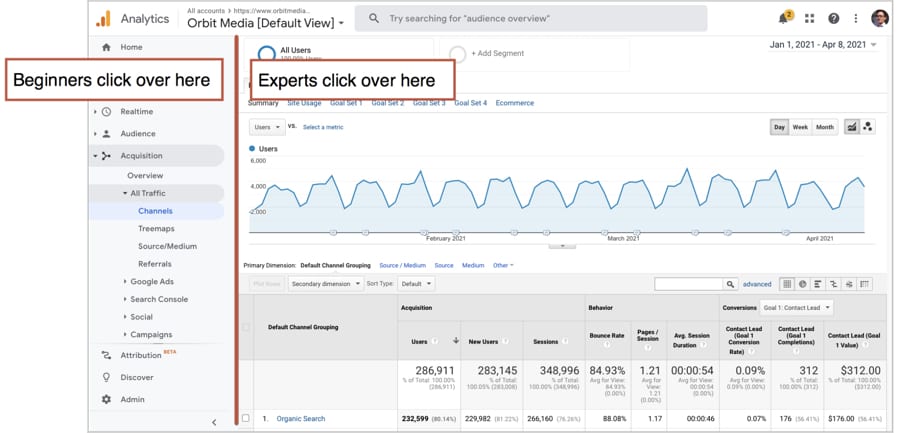Master Website Insights With Accurate Google Analytics Tracking Code
The reliable usage of Google Analytics pivots on the accurate execution of its monitoring code, a basic step usually overlooked by website proprietors. What are the typical risks that could undermine your tracking efforts, and how can you guarantee accuracy in your strategy?
Comprehending Google Analytics Basics
Google Analytics is a necessary device for site proprietors and marketing experts, supplying very useful understandings into customer habits and web site performance. At its core, Google Analytics collects information concerning visitors to an internet site, allowing individuals to analyze metrics such as web traffic sources, customer engagement, and conversion rates. Comprehending these basics is essential for optimizing a web site's performance and boosting customer experience.
The platform uses cookies to track communications, taping data such as page views, session periods, and bounce prices. This information is accumulated and provided via personalized control panels, enabling individuals to picture patterns in time. Key efficiency indicators (KPIs) can be kept an eye on, such as the complete number of customers, new versus returning site visitors, and the geographic circulation of the audience.
Furthermore, Google Analytics supplies segmentation features, enabling customers to isolate details web traffic sources or user demographics for even more targeted evaluation. By grasping these foundational aspects, site proprietors can make informed choices regarding content strategy, marketing campaigns, and total website enhancements. Ultimately, understanding Google Analytics fundamentals is crucial for leveraging data to drive growth and accomplish company purposes effectively.
Setting Up Your Tracking Code

Copy the provided monitoring code and paste it right into the HTML of your website. Preferably, this code needs to be positioned in the header area of every page you wish to track. This guarantees that the tracking code lots prior to any type of other content, allowing it to record information accurately. If you are making use of a material administration system (CMS) like WordPress, there are plugins offered that simplify the integration procedure.
After installation, validate that the tracking code is operating properly by using Google Tag Aide or the Real-Time reports in Google Analytics - when does the google analytics tracking code send an event hit to analytics?. This action is vital to verify that your information collection is active and exact, setting the structure for insightful evaluation
Common Monitoring Code Issues
Many site owners run into usual issues with their Google Analytics tracking code that can hinder information collection and analysis. One prevalent problem is inappropriate setup. This might occur when the tracking code is placed in the incorrect section of the web site's HTML, frequently causing incomplete or absent data. In addition, having numerous instances of the tracking code on a solitary page can result in inflated metrics, as customer communications might be counted greater than as soon as.
One more problem emerges from making use of ad blockers, which can prevent the tracking code from carrying out entirely, therefore skewing information. when does the google analytics tracking code send an event hit to analytics?. Furthermore, failing to set up filters appropriately can bring about the exemption of essential traffic sources or the inclusion of unwanted referral spam, misshaping the information accumulated
Web site proprietors may additionally overlook the value of monitoring code updates, particularly when migrating to Google Analytics 4 (GA4) from Universal Analytics. Lastly, insufficient testing prior to releasing modifications can lead to unnoticed errors in the tracking code, further making complex information dependability. Dealing with these common concerns is critical for making certain precise tracking and informative analytics.
Studying Site Data Properly
Precise data collection is just the primary step in leveraging Google Analytics; the actual worth lies in properly assessing that data to drive informed decision-making. To attain this, it is vital to identify vital efficiency indicators (KPIs) that straighten with your service goals. Emphasis on metrics such as conversion rates, customer involvement, and hop over to here traffic sources, as these will certainly give understandings into user habits and the overall performance of your site.
Making Use Of Google Analytics' segmentation attributes enables a deeper understanding of your audience. By breaking down information into details demographics, habits, and traffic channels, you can reveal trends and patterns that notify targeted techniques. Applying custom-made records and dashboards can enhance this process, allowing fast access to pertinent data.
In addition, routinely examining information trends over time aids to determine abnormalities and opportunities for renovation. Make use of visualization devices to present data in a conveniently digestible format, facilitating extra effective interaction with stakeholders. Eventually, the capacity to examine internet site information successfully empowers useful site businesses to make tactical decisions that boost individual experience, enhance marketing initiatives, and drive development.

Ideal Practices for Accurate Tracking
Implementing reliable monitoring techniques is crucial for getting trustworthy information in Google Analytics. To make sure exact tracking, begin by properly installing the Google Analytics tracking code on every page of your website. This can be achieved via a tag supervisor or by directly embedding the code into the HTML.
Following, configure your Google Analytics account to leave out internal web traffic. This can be done by setting up filters that determine and get rid of check outs from your organization's IP address, thereby preventing manipulated data. Furthermore, make use of event monitoring to keep an eye on particular user interactions, such as downloads or video clip plays, which common web page views might neglect.
Routinely examine your monitoring arrangement to confirm that all features, such as goals and ecommerce tracking, are working correctly. Develop a constant naming convention for your events and projects to help with much easier coverage and evaluation.
Last but not least, think about leveraging UTM specifications for campaigns to obtain insights right into the efficiency of different advertising and marketing initiatives. By complying with these finest methods, you can improve the precision of your information collection and evaluation, inevitably resulting in more enlightened decision-making for your website.
Verdict
Exact implementation of the Google Analytics tracking code is crucial for understanding site understandings. By making sure the tracking code is appropriately put and routinely examined, website owners can record vital individual communication data, hence helping with the recognition of key efficiency indications. Reliable evaluation of this data, integrated with adherence to best methods, enables informed decision-making and the optimization of online techniques. Inevitably, a durable tracking framework improves the capacity to drive involvement and improve total web site performance.

Not enough screening before releasing changes can result in undetected errors in the monitoring code, further making complex data dependability.Executing reliable tracking techniques is essential for obtaining reputable information in Google Analytics. By making certain the tracking code is correctly positioned and frequently audited, web site owners can record essential user communication information, hence assisting in the identification of key efficiency indications.